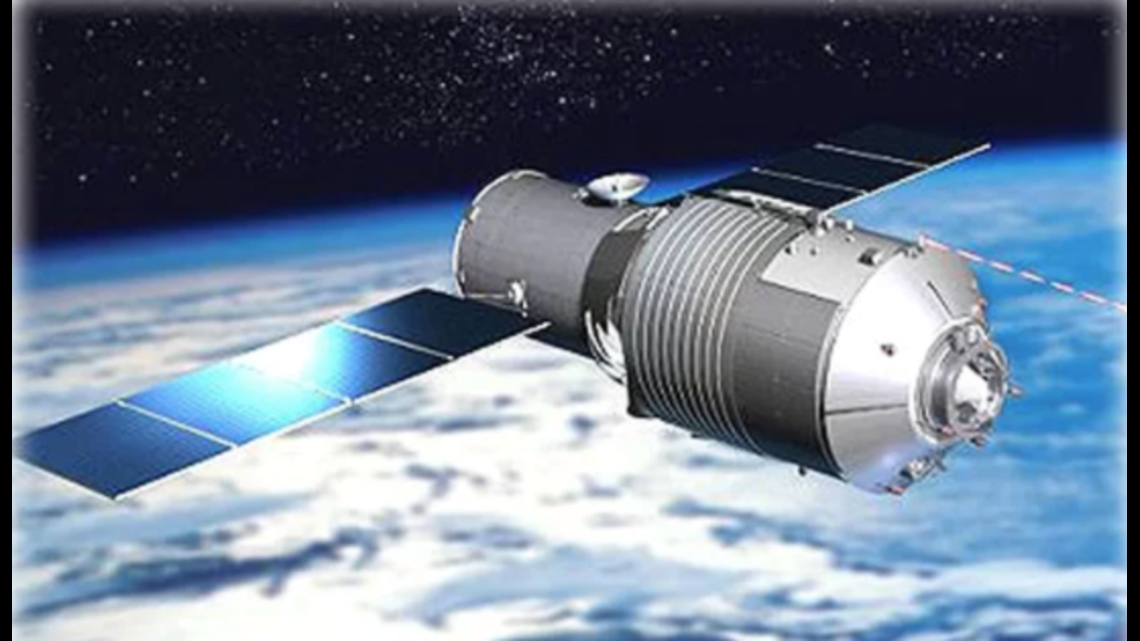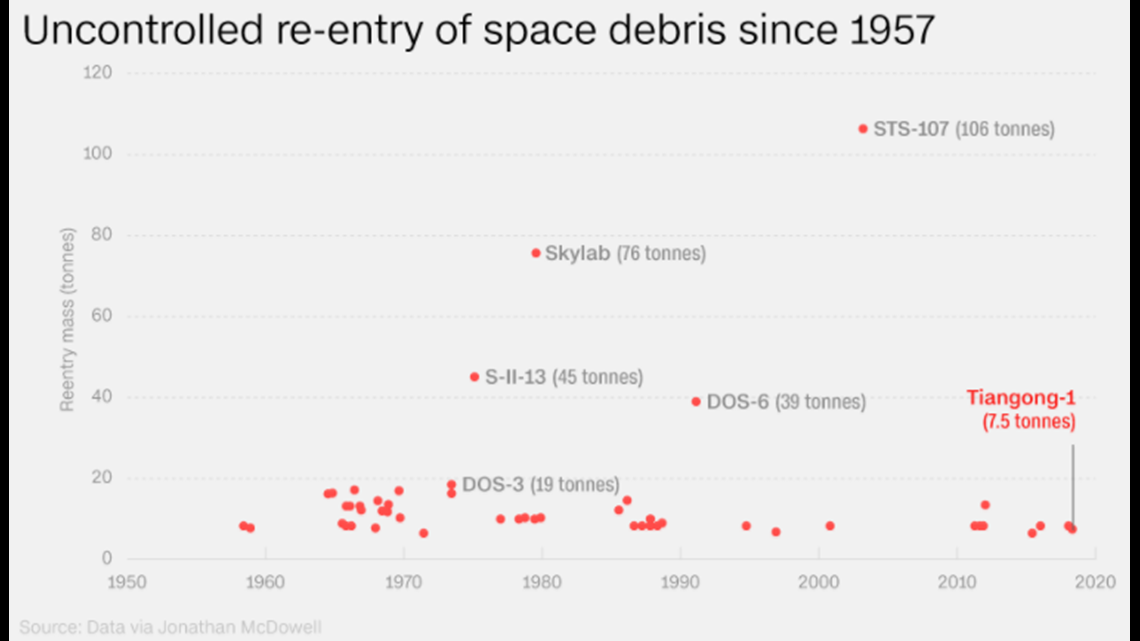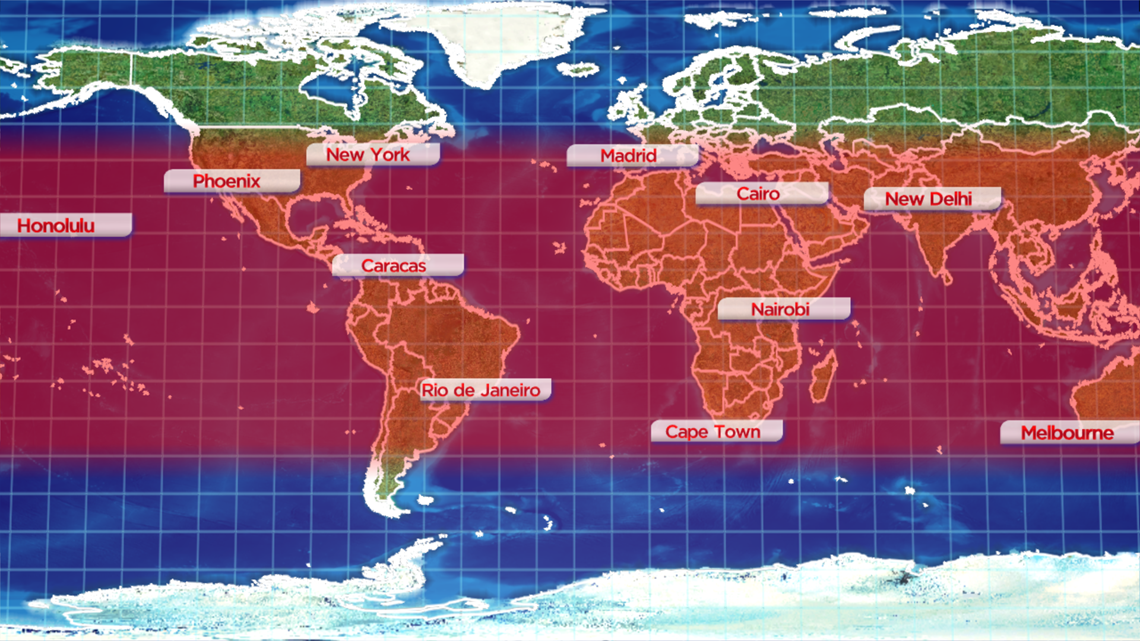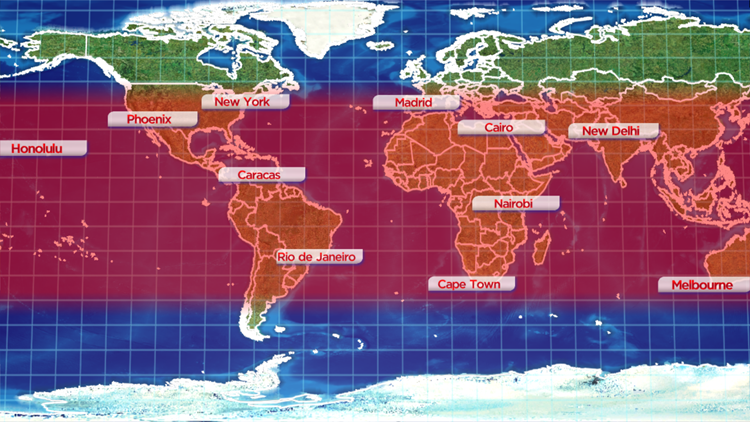An abandoned Chinese space lab is expected to fall to Earth within the next week or so. While most of it is expected to burn up upon reentry with the Earth’s atmosphere, some debris could make it all the way to the ground. Beijing lost control over the unmanned space craft two years ago due to a dysfunctional battery charger.
According to the most recent estimates from the European Space Agency (ESA), Tiangong-1 (which translates to “Heavenly Palace”) should fall back through the atmosphere between Friday, March 30 and Tuesday, April 3. Now scientists are trying to pinpoint where.


Since it can’t be guaranteed that all of it will burn up within the Earth’s atmosphere, scientists are closely monitoring the possibility that debris could impact the ground at a high velocity.
But Tiangong-1’s demise isn’t likely to be a big story. First, there’s a much better chance that the remains fall to water, rather than land. Next, the space station isn’t as large as previous spacecraft that have made it through reentry. Tiangong-1 is about seven and a half metric tons, which is about 16,530 pounds.


It’s pretty much anyone’s guess where it will enter the Earth’s atmosphere but experts say that locations above and below 43° north and south latitude are safe. But that means that much of the populated areas are still in the possible crashing-path of the debris. This includes much of the United States, including the Quad City area. But statistically, the chance of it affecting any one area is extremely small.




When the United States’ “Skylab” came crashing down to Earth in 1979, some debris landed in Australia. No one was injured or killed but a littering fine was issued by the country.
Tiangong-1 was launched in 2011 as a prototype for China’s ultimate space goal: a permanent, 20-ton space station that is expected to launch around 2022.
-Meteorologist Eric Sorensen



